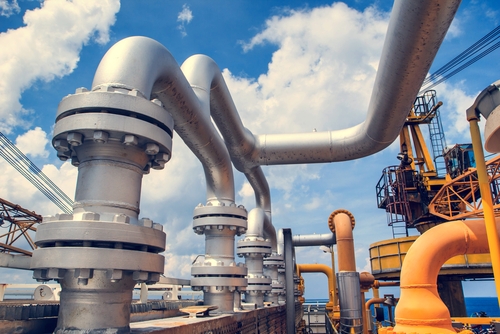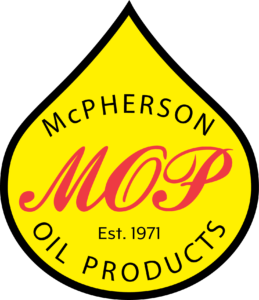How Does Recycled Oil Work?
06 Nov 2018, Posted by in General Oil waste by small automobile repair shops, electric generating stations and fleets is often not disposed of correctly. A lot of times, used oil is simply drained down the pipes, ending up in the ocean. To compound that problem, often fleet managers (and independent rig owners) go through oil at a higher rate than the average driver, adding to the waste.
Oil waste by small automobile repair shops, electric generating stations and fleets is often not disposed of correctly. A lot of times, used oil is simply drained down the pipes, ending up in the ocean. To compound that problem, often fleet managers (and independent rig owners) go through oil at a higher rate than the average driver, adding to the waste.
The Environmental Protection Agency of the United States recently launched a campaign called You Dump It; You Drink It to increase awareness among small automobile repair shops and home mechanics to dispose of used oil correctly. Not only does this waste hurt the environment but this waste leaves money on the table for many fleet managers and managers of heavy machinery. This is why looking into buying recycled oil can be game changer. Every year, oil recyclers collect around 380 and 800 million gallons of waste oil to recycle and make it suitable for reuse.
Multiple uses of recycled oil
Once oil is “used” it is categorized in two categories. Used Oil and Waste Oil (which can’t be recycled). Used oil is often called as slump oil, which isn’t a complete waste, so once the contamination is clean, it can be reused. You can convert slump oil into several types of recycled oil depending on their origin. These include the following.
- Hydraulic oil, a fuel that can be used to transfer power to hydraulic machinery;
- An additive that you can use in manufactured products;
- Mould oil, which is used to free metal and other products from the mould;
- Lubricant, transformer, and hydraulic re-refined base oil;
- Bitumen based products
- Industrial burner oil, a type of oil that is dewatered, filtered and demineralized so that it can be used in industrial burners.
As a homeowner who uses oil for maintaining the home, repair shops, and other parties that don’t have proper means of disposing of the oil, need to take the slump oil to their local used oil collectors. Either they recycle the oil themselves or send it to a specialized company.
How Do You Treat Slump Oil (AKA How Do You Recycle Oil)?
The process typically involves four steps, which include dewatering, filtering and demineralization, propane deasphalting, and distillation.
1. Dewatering
A simple process, dewatering involves moisture from the oil. During the process, oil is placed in a huge settling tank. Since oil is lighter than water, it floats and is removed carefully without disturbing the separation. In the case of emulsifiers, demulsifiers are put in the tank to break the bond between water and oil.
2. Filtering and demineralization
Inorganic materials and additives like anti-foam agents, antioxidants, and corrosion inhibitors are removed from the oil in the second process. The dewatered oil is collected in Reaction Tank A. Then, sulphuric acid is added to it, and heated at 60 degree Celsius followed by addition of surface-active reagent. After letting the mixture stand for a while, you can see two different layers — water-based solutions at the bottom of the tank called slurry and oil.
In Reaction Tank B, finer solid particles are filtered from the oil and oil is collected in Reaction Tank C where dilution with lighter petroleum product occurs.
3. Propane deasphalting
This step gives out two substances — oil feedstock for the next process and propane, which is also the input. Oil from the earlier process is added to Extraction Chamber A along with propane. Since oil is heavier than propane, it settles in the chamber. When this happens, propane moves up and picks up lube oil components, which are soluble in it.
Particles insoluble in propane settles at the bottom of the chamber and transferred to Extraction Chamber C while propane is vaporized to Extraction Chamber B. Oil is extracted and sent for the next process.
4. Distillation
Oil recyclers use any of these two distillation techniques — atmospheric distillation and vacuum distillation. In the first type, oil is heated and sent to a distillation tower. You don’t need to dewater oil for atmospheric distillation. The heat vaporizes hydrocarbons, which are condensed and collected in another chamber. Only temperatures until 300 degree Celsius can be used in this process as anything higher can cause thermal cracking. If the oil still has impurities, it is sent for vacuum distillation. If not, the oil is ready to be reused.
In vacuum distillation, oil is sent through a vacuum chamber where it is heated. Since different materials have different vaporizing temperatures, the heated oil is sent through a tall chamber with different sections. Vaporized products rise through it and condense according to their temperature to fall into a chamber. This process is carried on three times to produce clean recycled oil.
Some substances like heavy molecules remain in the oil including carryover contaminants and a few types of lube oil additives.
While advancements in technology might reduce the dependence on oil, it likely won’t eliminate the need for it any time soon.
McPherson Oil is proud to handle this process for you with ReNEW -360 degrees of energy reclamation and renewal that helps save the environment and save your business money. Contact us today and see how we can save you money while saving the environment.
